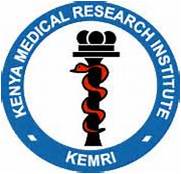Related Links
USAMRD-K DEID currently undertakes research and surveillance in the following areas:
• Influenza (Human, Avian and Swine)
• Arbovirology
• Viral Hemorrhagic Fever
• Acute Febrile Illnesses,
• Leishmaniasis
• Enteric Diseases
• Sexually Transmitted Diseases
• Health Demographics
• Malaria Drug Susceptibility
These activities are spread out across facilities in Africa as follows: Kenya
• The National Influenza Center located at the Center for Public Health Research in KEMRI, Nairobi
• The Arbovirology/Viral Hemorrhagic Fever Laboratory located at the Center for Virus Research in KEMRI, Nairobi
• The National Malaria Drug Resistance Surveillance Laboratories in Kisumu, Western Kenya
• The Kisumu West Health and Demographic Surveillance System (KWHDSS) in Kisumu West District
• The Microbiology Hub in Kericho for Enterics Surveillance in South Western Kenya
• The Gonorrhea Drug Susceptibility Surveillance Laboratories in KEMRI, Nairobi
• The Acute Febrile Illness Surveillance Project Laboratories in Kisumu, Western Kenya
• The Domestic Avian Influenza Surveillance Laboratories in Kisumu, Western Kenya Uganda
• The Makerere University Walter Reed Project (MUWRP) for Influenza Surveillance Laboratories located at the Uganda Virus Research Institute (UVRI) in Entebbe and Makerere University College of Veterinary Medicine in Kampala, Uganda. Tanzania
• The Tanzania People’s Defense Force (TPDF) DEID program, Lugalo Military Hospital in Dar es Salam, Tanzania Cameroon
• The Global Viral Forecasting (GVF) for Influenza Surveillance Laboratory located at the Centre de Recherche de Santé des Armées or the Military Health Research Center, (CRESAR) in Yaounde, Cameroon
• The laboratory for Emerging Infectious Diseases (LEID) located at the University of Buea (UoB) in Buea South West region, Cameroon
Kenya National cause of outpatient Morbidity 2001-2009.
USAMRD-K DEID is now making a difference in Influenza surveillance and detection capabilities. Additionally, researchers at USAMRD-K DEID play a vital role in helping to predict and prevent zoonotic diseases which according to the World Health Organization (WHO) make up more than 60% of all human infectious diseases and more than 70% of all emerging infectious diseases. USAMRD-K DEID has rigorous bio-safety/bio-security standards compliant with the internationally accepted standards of the WHO. USAMRD-K DEID is also involved in extensive capacity building in all countries of operation through training to improve the host countries public health infrastructure for disease surveillance and research. Overall, our robust surveillance network plays a critical role in outbreak prediction, mitigation and response. .
Leishmaniasis is a disease caused by protozoan parasites that belong to the genus Leishmania and is transmitted by the bite of female phlebotomine sand flies (subfamily Phlebotominae) About 30 of the 500 known phlebotomine species that infect mammals have been found to transmit the disease and while most forms of the disease are transmissible to humans only from animals (zoonosis), some can be spread between humans.
Some of the disease causing Leishmania include: the L. donovani complex with three species (L. donovani, L. infantum, and L. chagasi); the L. mexicana complex with four main species (L. mexicana, L. amazonensis, and L. venezuelensis); L. tropica; L. major; L. aethiopica; and the subgenus Viannia with four main species (L. (V.) braziliensis, L. (V.) guyanensis, L. (V.) panamensis, and L. (V.) peruviana).

Leishmaniasis can have a wide range of clinical symptoms, which may be cutaneous, mucocutaneous or visceral.
Cutaneous leishmaniasis is the most common form of leishmaniasis while visceral leishmaniasis is the most severe, affecting vital body organs such as the spleen, liver and bone marrow.
Leishmaniasis threatens about 350 million people in 88 countries. As many as 12 million people are currently believed to be infected, with about 1–2 million estimated new cases occurring every year.
The visceral form of leishmaniasis has an estimated incidence of 500,000 new cases and 60,000 deaths each year.
Sand flies P. martini and P. orientalis, are known vectors for Leishmania donovani, the causative agent for visceral leishmaniasis (VL), also known as Kalaazar. P. duboscqi and P. guggisbergi are vectors for L. major and L. tropica respectively, the aetiological agents for cutaneous leishmaniasis (CL). Sand flies occupy a variety of habitats and exhibit a wide range of host-feeding preferences. Thus, information on population distribution and infection rates is crucial for targeted prevention and control measures. Sand fly surveillance is often conducted in conjuction with current mosquito surveillance activities.Occasionally, specific projects are conducted by the Entomology section
.For example, the specific breeding areas of P. orientalis was investigated in 2014 and 2015
The KWHDSS is set up to better monitor demographic changes and disease prevelance within the target population, by integrating data from house hold based and health facilities-based survey.

1.
Redemptah Yeda, Luicer A. Ingasia, Agnes C. Cheruiyot, Charles Okudo, Lorna J.
Chebon, Jelagat Cheruiyot, Hoseah M. Akala, Edwin Kamau. The Genotypic and
Phenotypic Stability of Plasmodium falciparum Field Isolates in Continuous In
Vitro Culture. PLoS ONE 11(1): e0143565. doi:10.1371/journal.pone.0143565.
http://journals.plos.org/plosone/article?id=10.1371/journal.pone.0143565
2.
Agnes C.
Cheruiyot,
Jennifer
M. Auschwitz,
Patricia
J. Lee,
Redemptah A. Yeda,
Charles
O. Okello,
Susan E.
Leed,
Mayank
Talwar,
Tushar
Murthy,
Heather
W. Gaona,
Mark R.
Hickman,
Hoseah
M. Akala,
Edwin
Kamau and
Jacob D.
Johnson. Assessment of the Worldwide Antimalarial Resistance Network
Standardized Procedure for In Vitro Malaria Drug Sensitivity Testing Using SYBR
Green Assay for Field Samples with Various Initial Parasitemia Levels.
Antimicrob. Agents Chemother. April 2016 vol. 60 no. 4 2417-2424
http://aac.asm.org/content/60/4/2417.abstract
3.
Ingasia LA, Cheruiyot J, Okoth SA, Andagalu B, Kamau E. (2015). Genetic
variability and population structure of Plasmodium falciparum parasite
populations from different malaria ecological regions of Kenya. Infect Genet
Evol. 2015 Oct 12. pii: S1567-1348(15)30013-7.
http://www.sciencedirect.com/science/article/pii/S1567134815300137
4.
Achieng, AO. Muiruri, P., Ingasia LA., Opot, BH., Juma, DW., Yeda, R., Ngalah,
BS., Ogutu, BR., Andagalu B., Akala HM., Kamau E. (2015). Temporal trends in
prevalence of Plasmodium falciparum molecular markers selected for by
artemether-lumefantrine treatment in pre-ACT and post-ACT parasites in western
Kenya. International Journal for Parasitology: Drugs and Drug Resistance, Volume
5, Issue 3, December 2015, Pages 92–99
http://www.ncbi.nlm.nih.gov/pmc/articles/PMC4501530/
5.
Ngalah BS, Ingasia LA, Cheruiyot AC, Chebon LJ, Juma DW, Muiruri P, Onyango I,
Ogony J, Yeda RA, Cheruiyot J, Mbuba E, Mwangoka G, Achieng AO, Ng'ang'a Z,
Andagalu B, Akala HM, Kamau E. (2015). Analysis of major genome loci underlying
artemisinin resistance and pfmdr1 copy number in pre- and post-ACTs in western
Kenya. Sci Rep. 6;5:8308
http://www.nature.com/articles/srep08308
6.
Ingasia LA, Akala HM, Imbuga MO, Opot BH, Eyase FL, Johnson JD, Bulimo WD, Kamau
E. (2015). Molecular characterization of the cytochrome b gene and in vitro
atovaquone susceptibility of Plasmodium falciparum isolates from Kenya.
Antimicrob Agents Chemother. 59(3):1818-21. http://aac.asm.org/content/59/3/1818.abstract
7.
Kamau E, Campino S, Amenga-Etego L, Drury E, Ishengoma D, Johnson K, Mumba D,
Kekre M, Yavo W, Mead D, Bouyou-Akotet M, Apinjoh T, Golassa L,
Randrianarivelojosia M, Andagalu B, Maiga-Ascofare O, Amambua-Ngwa A, Tindana P,
Ghansah A, MacInnis B, Kwiatkowski D, Djimde AA. K13-Propeller Polymorphisms in
Plasmodium falciparum Parasites From Sub-Saharan Africa. J Infect Dis. 2014.
http://jid.oxfordjournals.org/content/early/2014/11/02/infdis.jiu608
8.
Ghansah A, Amenga-Etego L, Amambua-Ngwa A, Andagalu B, Apinjoh T, Bouyou-Akotet
M, Cornelius V, Golassa L, Andrianaranjaka VH, Ishengoma D, Johnson K, Kamau E,
Maïga-Ascofaré O, Mumba D, Tindana P, Tshefu-Kitoto A, Randrianarivelojosia M,
William Y, Kwiatkowski DP, Djimde AA. (2014). Monitoring parasite diversity for
malaria elimination in sub-Saharan Africa. Science. 2014 Sep
12;345(6202):1297-8. doi: 10.1126/science.1259423.
http://www.ncbi.nlm.nih.gov/pmc/articles/PMC4541720/
9.
Kamau E, Akala HM, Achieng AO, Yeda R, Ingasia LA, Cheruiyot AC, Juma DW, Okudo
C, Omariba D, Muriuki C, Owiti EA, Omondi P, Otedo A, Andagalu B, Ogutu B.
(2015) Case Report of Attenuated-Responsiveness to Coartem® in Western Kenya.
IJMPCR 2(1): 5-9, 2015
http://sciencedomain.org/abstract/6224
10.
Namukobe J, Kiremire BT, Byamukama R, Kasenene JM, Akala HM, Kamau E, Dumontet
V. (2014). Antiplasmodial compounds from the stem bark of Neoboutonia macrocalyx
pax. J Ethnopharmacol. 13;162:317-22. doi: 10.1016/j.jep.2014.12.018. Epub 2014
Dec 19.
http://www.sciencedirect.com/science/article/pii/S037887411400899X
11.
Akala HM, Achieng AO, Eyase FL, Juma DW, Ingasia L, Cheruiyot AC, Okello C,
Omariba D, Owiti EA, Muriuki C, Yeda R, Andagalu B, Johnson JD, Kamau E. (2014).
Five-year tracking of Plasmodium falciparum allele frequencies in a holoendemic
area with indistinct seasonal transitions.
J. Multidiscip. Healthc. 2014 Nov 6;7:515-23.
http://www.ncbi.nlm.nih.gov/pubmed/25395861
12.
Achieng AO, Ingasia LA, Juma DW, Cheruiyot AC, Okudo CA, Yeda RA, Cheruiyot J,
Akala HM, Johnson J, Andangalu B, Eyase F, Jura WG, Kamau E. (2014). Doxycycline
reduced in vitro susceptibility in Plasmodium falciparum Kenyan field isolates
is associated with PftetQ KYNNNN sequence polymorphism. Antimicrob Agents
Chemother. 2014 Jul 28. pii: AAC.02788-13.
http://aac.asm.org/content/58/10/5894.full
13.
Juma DW, Omondi AA, Ingasia L, Opot B, Cheruiyot A, Yeda R, Okudo C, Cheruiyot
J, Muiruri P, Ngalah B, Chebon LJ, Eyase F, Johnson J, Bulimo WD, Akala HM,
Andagalu B, Kamau E. (2014). Trends in drug resistance codons in Plasmodium
falciparum dihydrofolate reductase and dihydropteroate synthase genes in Kenyan
parasites from 2008 to 2012. Malar J. 2014 Jul 2;13(1):250.
https://malariajournal.biomedcentral.com/articles/10.1186/1475-2875-13-250
14.
Cheruiyot J, Ingasia LA, Omondi AA, Juma DW, Opot BH, Ndegwa JM, Mativo J,
Cheruiyot AC, Yeda R, Okudo C, Muiruri P, Bidii NS, Chebon LJ, Angienda PO,
Eyase FL, Johnson JD, Bulimo WD, Andagalu B, Akala HM, Kamau E. (2014).
Polymorphisms in Pfmdr1, Pfcrt and Pfnhe1 Genes are Associated with Reduced in
vitro Activities of Quinine in Plasmodium falciparum Isolates from Western
Kenya. Antimicrob Agents Chemother. 58(7):3737-3743
http://aac.asm.org/content/58/7/3737.full















